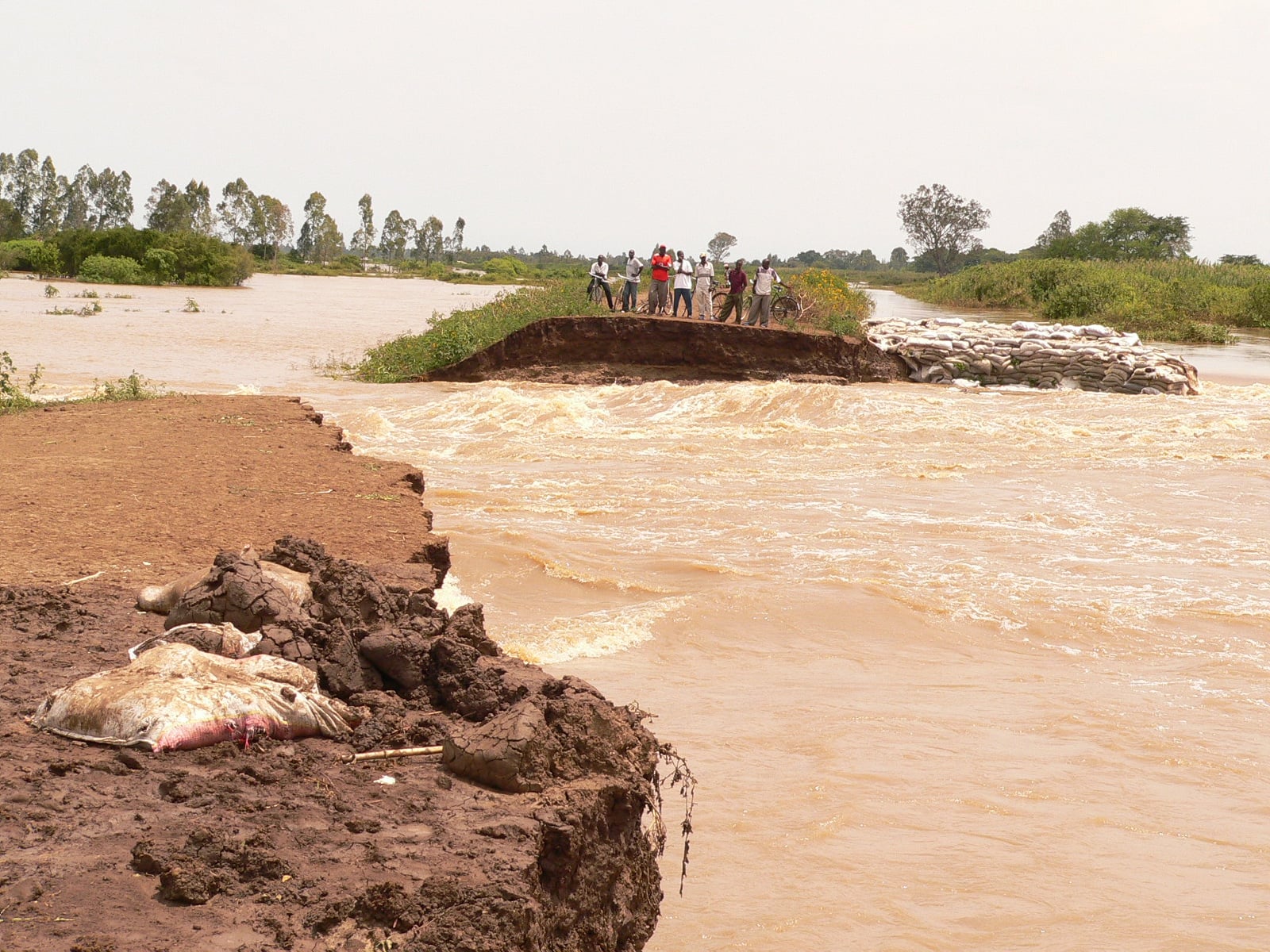Almost 70 families were marooned on a dyke after heavy flooding in the Budalangi region of Kenya's western district of Busia, according to humanitarian officials.
Kenya Red Cross Society (KRCS) public relations manager Anthony Mwangi said the rescuers were using boats to reach and evacuate the families at the River Nzoia.
The dyke broke at two sections next to the Makunda Secondary School and the Bwal Lwanga areas in Budalangi, north of Lake Victoria near the Kenya-Uganda border, said Mwangi.
The Nzoia River had burst its banks following heavy rains in the western highlands, especially on the Cherangani and Kaptagat hills that feed the river, displacing more than 40,000 people.
According to Mwangi, the number of displaced people was expected to rise if the northern dyke in Nakhusiongo also failed. "The ground in the area is already showing signs of weakening," he said.
The displaced were camped in the open at the Mukhobola camp in Budalangi, where they have been living in simple shelters made of bamboo. KRCS was organising mobile toilets and latrines to help prevent the outbreak of water borne diseases.
A further 430 families have been displaced by floods in the Kwanza and Kiminini divisions of the neighbouring district of Trans-Nzoia due to the River Sabwani bursting its banks, according to the KRCS.
Flooding in the low-lying areas of western Kenya has become a perennial occurrence despite the erection of dykes to prevent the spread of flood waters. In January, several thousand people were displaced by floods in the region following heavy rains.
In 2004, nearly 10,000 people were affected by extensive flooding in Nyando district, 50km east of Budalangi, when a river burst its banks and inundated 166 homes. At least 25,000 people in the region also suffered floods in 2003.
Meanwhile, a joint search and recovery operation for landslide victims in Khusavali village, in the western district of Kakamega North, was called off on 16 August with seven people reported dead and one person missing, according to the KRCS.
The 11 August landslide was attributed to heavy rains and the loosening of earth by underground streams near the village.
aw/sr
This article was produced by IRIN News while it was part of the United Nations Office for the Coordination of Humanitarian Affairs. Please send queries on copyright or liability to the UN. For more information: https://shop.un.org/rights-permissions





